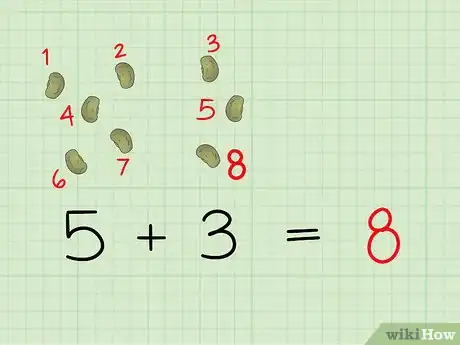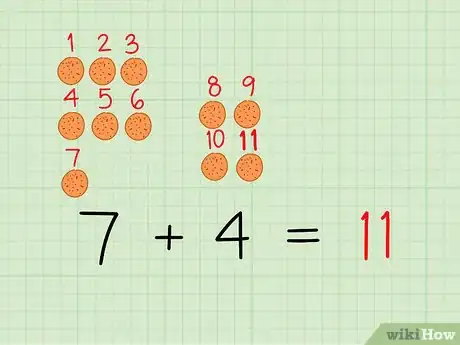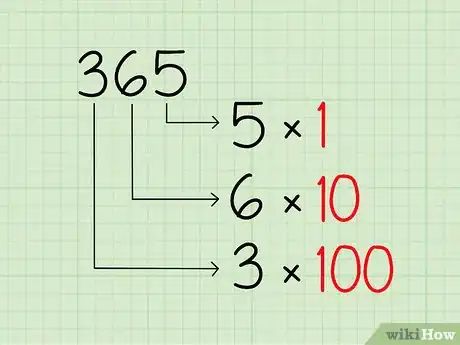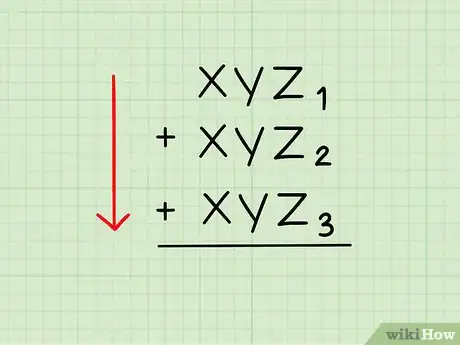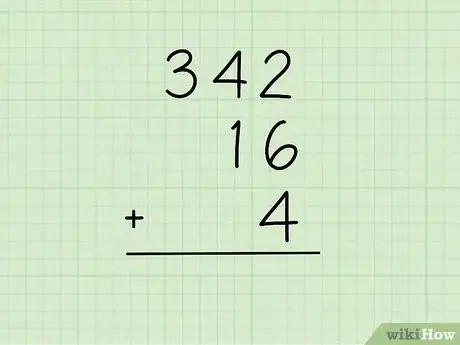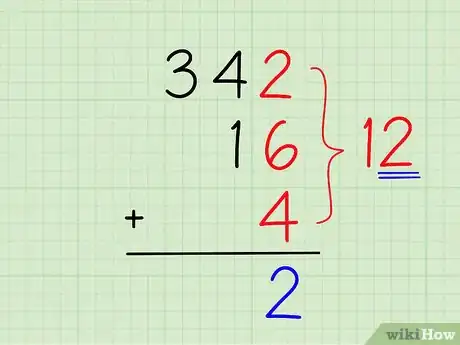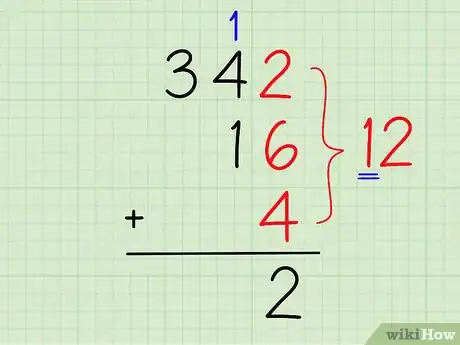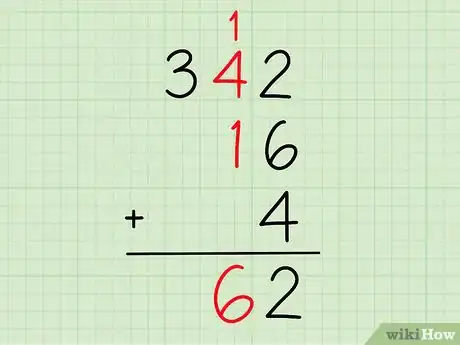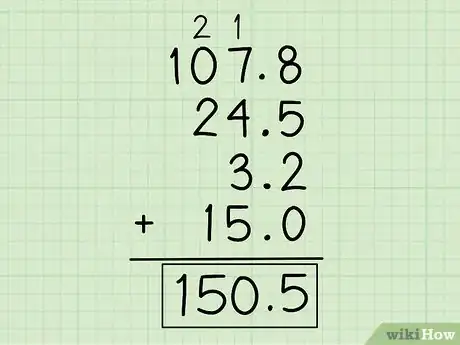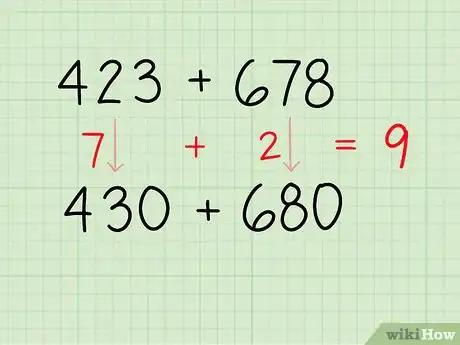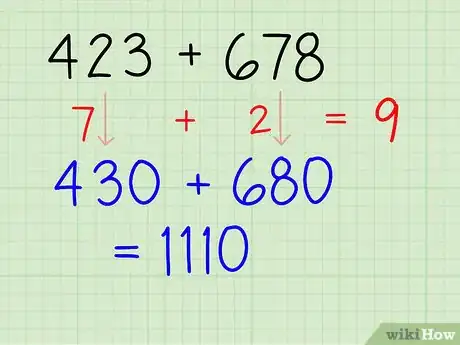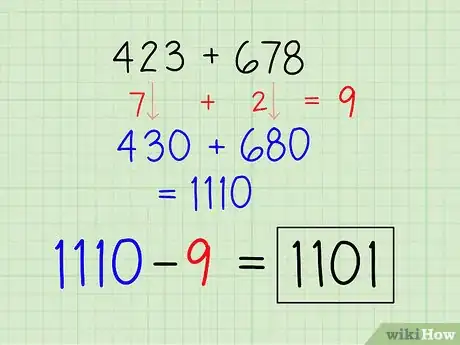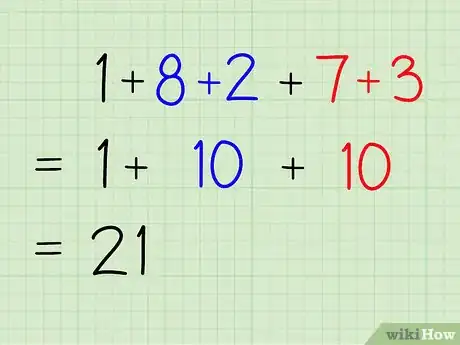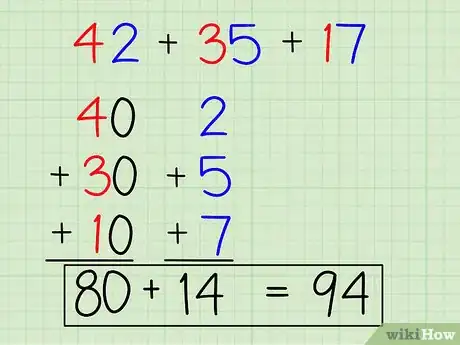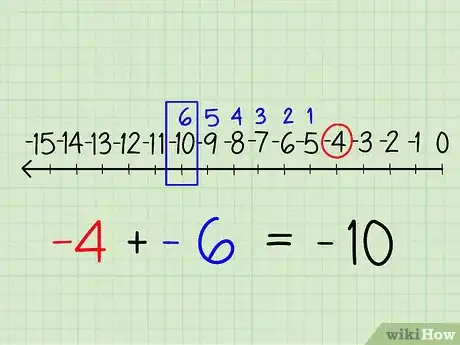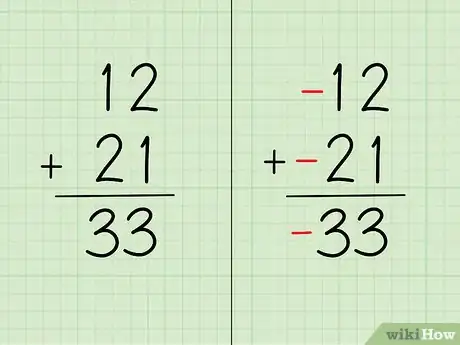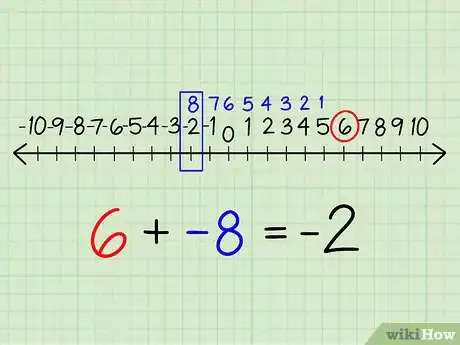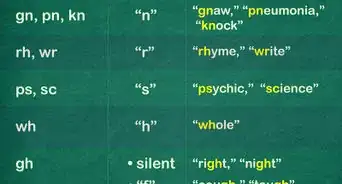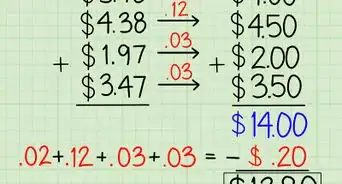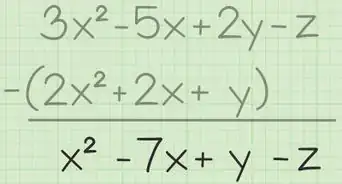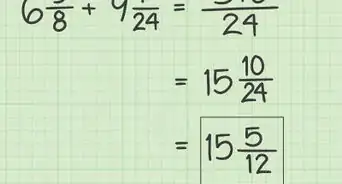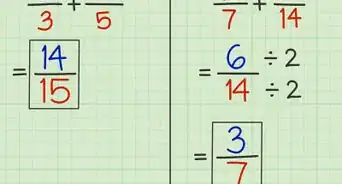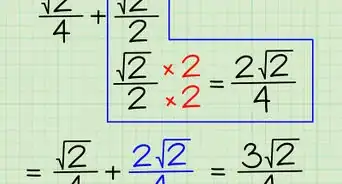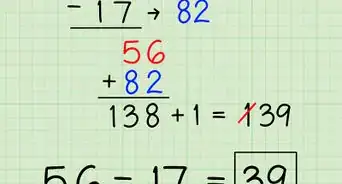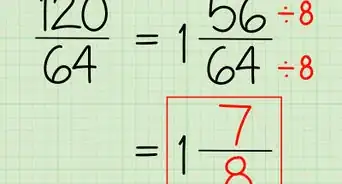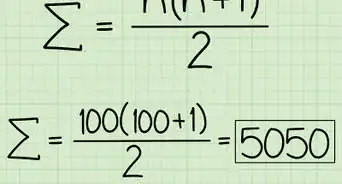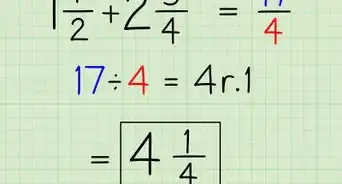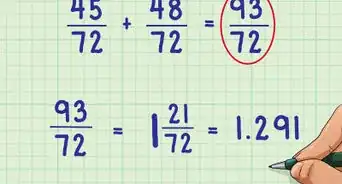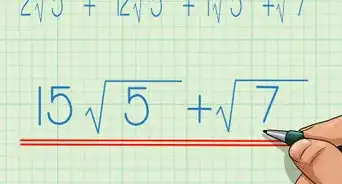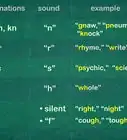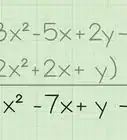This article was co-authored by wikiHow staff writer, Danielle Blinka, MA, MPA. Danielle Blinka is a Writer, Editor, Podcaster, Improv Performer, and Artist currently living in Houston, TX. She also has experience teaching English and writing to others. Danielle holds a Bachelor of Arts in English, Bachelor of Arts in Political Science, Master of Arts in English with a concentration in writing, and Master of Public Administration from Lamar University.
There are 9 references cited in this article, which can be found at the bottom of the page.
This article has been viewed 143,683 times.
Learn more...
Addition is an essential skill in both math class and everyday life. It’s normal to find addition to be challenging, but you can improve your math skills! If you’re just learning how to add, start by practicing basic addition. Next, you can start adding numerals, which includes decimals. Then, try a few techniques to help you add quickly! Adding negative numbers is a little tricky, but it gets easier with practice.
Steps
Practicing Basic Addition
-
1Use a number line if you’re just learning to add. Draw a line, then write numbers along the line from 0-15. Circle the first number you want to add. Start at that number. Then, count down your number line, moving the same number of spaces as the second number you’re adding. You’ll land on your answer.[1]
- Let’s say you want to add 4+5. Circle 4 on your number line, then count 5 spaces down the line. You will land on 9, which is your answer.
- Use your number line to add these numbers:
- 5+3
- 1+7
- 6+2
- 4+4
-
2Add using beans to get more practice. Start with a basic math problem, such as 4+6. Create two piles of beans to represent your problem, including one group of 4 beans and one group of 6 beans. Next, you can combine your two sets of beans to get the answer to your addition problem. Count your beans to see that you now have a total of 10 beans.[2]
- If you don’t have beans, you can use any small item that fits in your hand to practice addition! For example, you can use blocks, candies, coins, or legos.
- Use your beans to add these numbers:
- 5+3
- 2+7
- 3+9
- 4+1
Advertisement -
3Draw oranges for each number to help you see how adding works. If you were adding 7+4, you’d draw one group of 7 oranges and one group of 4 oranges. Then, count all of the oranges to see how many you have when you add them together, which is 11 oranges. This is your answer.[3]
- You can draw any object to represent your numbers, but it’s best to choose something easy. As another option, you can use stickers!
- Use drawing to add these numbers:
- 1+7
- 2+5
- 8+6
- 4+3
Adding Numerals
-
1Learn the number places. Each digit in a number has a name, and knowing them will help you add. Number places go from left to right:[4]
- The spot on the right is the “ones” place.
- The second spot from the left is the “tens” place.
- The third spot from the left is the “hundreds” place.
- Here’s an example: In the number 583, the 3 is in the ones place, the 8 is in the tens place, and the 5 is in the hundreds place.
-
2Write out your problem vertically. Line up your numbers so that each digit place is in a row. This makes it easier to add each column of numbers to get a final sum.[5]
- If your problem is presented horizontally on a worksheet, it helps to rewrite it vertically to make it easier to solve.
-
3Line up the numbers. Each number place should be in its own line with each number stacked vertically. If one number uses fewer number spaces than another, leave the left spot blank. Here's an example:[6]
- Here’s how you’d write 16+4+342:
- 342
- _16
- +_4
-
4Add the ones column first. The ones column is on the right. Once you have the sum of these numbers, write the ones digit of the sum in the ones place of your answer spot. If you have a tens digit in your sum, write it above the tens column in your problem.[7]
- For 342+16+4, you’d add 2+6+4=12. Write the 2 in your ones place in your answer. Carry the other 1 into your tens column.
-
5Carry the tens from the ones sum into the column of your problem. If you have a number in the tens place, write the tens place number at the top of the tens column. This is the column located to the left of your ones column. You will include this number in the tens total.[8]
- In the above example, you’d write the 1 from the tens place in 12 on top of the tens column.
-
6Count the next column. Go to the tens column, which is the next column to the left. Add up the numbers in this column, including your carry over number, if you had one. Write the ones place in this sum in the tens spot on your answer, then carry over the tens spot in your sum, if you had one.[9]
- For 342+16+4, you’d add 4+1+1=6. Remember, the second 1 is the carry over from your ones sum. You’d write 6 down in the tens spot of your answer. You don’t have any carry over from this sum.
-
7Continue working these steps until you get a final sum. For longer problems, you’ll need to add each column, moving from right to left. For each column, write the ones place of that column’s sum in the corresponding number place in the answer. Then, carry over the tens place of the sum in the next column to the left.[10]
- When you complete the last column on the left, you’ll have your final sum.
- In our example, you only have one number in the hundreds column, so you’d carry down the 3 to your answer. Your final sum for 342+16+4=362.
-
8Follow the same steps when adding decimals. Although it seems challenging, you use the same process to add decimals as you do with whole numbers. Just make sure you line up each numbers place properly, including your decimals. If a number in the problem doesn’t have a decimal, add a .0 to make it easier to workout the problem. Here’s an example:[11]
- 107.8
- _24.5
- __3.2
- +15.0
Learning Techniques to Add Quickly
-
1Round all of your numbers to multiples of ten or one hundred. Multiples of ten and one hundred are much easier to add together! Multiples of ten are easier to manage, but using hundreds can be helpful for larger numbers.[12]
- Always round up because it’s easier to keep track of how much you’re adding to your original numbers as you round.
- Here’s an example problem: 423+678. You’d round it like this: 430 + 680 or 500+700.
-
2Count out how many numbers you added when you rounded. You’ll need to take away the numbers you added when rounding. You can count off these numbers or simply add them in your head. Hold onto this number.[13]
- In the problem listed above, you’ll count out 7 places for rounding 423 to 430 and 2 places for rounding 678 to 680. Add 7+2=9.
-
3Add the two rounded numbers together in your head. Since you rounded, it’s easier to calculate this total in your head. However, this isn’t your final answer![14]
- For the problem above, you’d add 430+680=1110
-
4Subtract the number you added when rounding. You can use simple subtraction or count backwards from the sum of your rounded numbers. This will give you your final total!
- To solve the problem above, you’d subtract or count back 1110-9 =1101.
-
5Add the numbers in sets, then add the set totals together, as an alternative. When you’re adding several numbers together, you may find it easier to pair numbers together to create round numbers that end in “5” or “0,” then add those round numbers together.
- For example, let's say you're adding 1+8+2+7+3. You could add 8+2 = 10 and 7+3=10. That leaves you with 1+10+10=21.
-
6Add the numbers by places if that’s easier for you. Break the number apart into just tens and ones. For example, 42+35+17 would become two problems: 40+30+10 and 2+5+7. It’s easy to add 40+30+10=80. Next, you’d just need to count 2+5+7=14. Finally, add your two sums together to get a final sum of 80+14=94.
- You can also do this with numbers in the hundreds. You can break the number down into just the hundreds, just the tens, and just the ones. However, using one of the other techniques may be easier when adding big numbers.
Adding Negative Numbers
-
1Make a number line to practice adding two negative numbers. Draw a number line, but place your zero to the far right of the line. Then, number your line toward your left using negative numbers. Mark the first negative number you want to add on the number line. Then, count out your second negative number, moving to the left. This gives you your answer.[15]
- For example, let’s say you’re adding -4+-6. You’d circle -4 on your number line. Then, count 6 spaces to the left. You’ll arrive at -10, which is your answer.
-
2Add two negative numbers the same way you add positive numbers. This is because you are moving the same number of places on the number line, just toward the negative side. This means your final answer will be negative.[16]
- For example, when adding -12+-21, you could add 12+21=33. However, since your numbers were negative, you’d make your answer -33.
-
3Use a number line to practice adding a positive and negative number. Draw a number line with zero in the middle. Number to the left moving from -1 to -10, then number to the right 1 to 10. Circle the positive number on your number line. Then, count out your negative number to find the answer, moving to the left on your number line.[17]
- For instance, let’s say you’re adding 6+-8. You’ll circle 6 on your number line. Then, count 8 spaces backwards, moving to the left on your line. You’ll arrive at -2, which is your answer.
-
4Treat a positive number plus a negative number like subtraction. Adding a negative number with a positive number works just like subtraction. This is because you’re taking away spaces on the number line. When you’re solving a problem on paper, you can write it out like a subtraction problem.[18]
- For example, 15+-17 would become 15-17=-2.
Community Q&A
-
QuestionIs it bad for my 8-year-old cousin to not know how add?
 Community AnswerEveryone learns at different rates. Some people need a little more time and a little extra help. You could suggest to your aunt/uncle that they might want to hire a tutor, or you could even offer to help him/her yourself.
Community AnswerEveryone learns at different rates. Some people need a little more time and a little extra help. You could suggest to your aunt/uncle that they might want to hire a tutor, or you could even offer to help him/her yourself.
Warnings
- Dont confuse addition with concatenation: 1+1 is not 11!⧼thumbs_response⧽
References
- ↑ https://www.youtube.com/watch?v=AuX7nPBqDts&feature=youtu.be&t=120
- ↑ https://www.leapfrog.com/en-us/learning-path/activities/activity-bean-counters
- ↑ https://www.youtube.com/watch?v=AuX7nPBqDts&feature=youtu.be&t=39
- ↑ http://www.aaamath.com/plc21bx2.htm
- ↑ https://www.mathsisfun.com/numbers/addition-column.html
- ↑ https://www.mathsisfun.com/numbers/addition-column.html
- ↑ https://www.mathsisfun.com/numbers/addition-column.html
- ↑ https://www.mathsisfun.com/numbers/addition-column.html
- ↑ https://www.mathsisfun.com/numbers/addition-column.html
- ↑ https://www.mathsisfun.com/numbers/addition-column.html
- ↑ https://www.mathsisfun.com/adding-decimals.html
- ↑ https://www.calculatorsoup.com/calculators/math/roundingnumbers.php
- ↑ https://www.mathsisfun.com/numbers/addition-tips-tricks.html
- ↑ https://www.mathsisfun.com/numbers/addition-tips-tricks.html
- ↑ https://www.youtube.com/watch?time_continue=3&v=AcpIO62x2oo
- ↑ https://www.youtube.com/watch?time_continue=3&v=AcpIO62x2oo
- ↑ https://www.youtube.com/watch?time_continue=3&v=AcpIO62x2oo
- ↑ https://www.youtube.com/watch?time_continue=3&v=AcpIO62x2oo
About This Article
"If you want to learn how to add, gather a handful of small objects like beans or blocks. Then, split the objects into 2 piles. Count the number of objects in each pile, and write down both numbers. In our example, one of our piles has 3 objects while the other has 2 objects. Next, combine the piles together and count the total number of objects. Now, our final pile has 5 objects. This new number is the total, or sum, of all the objects."

